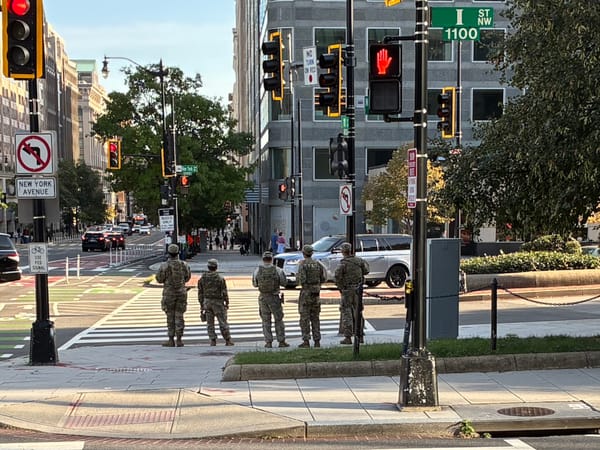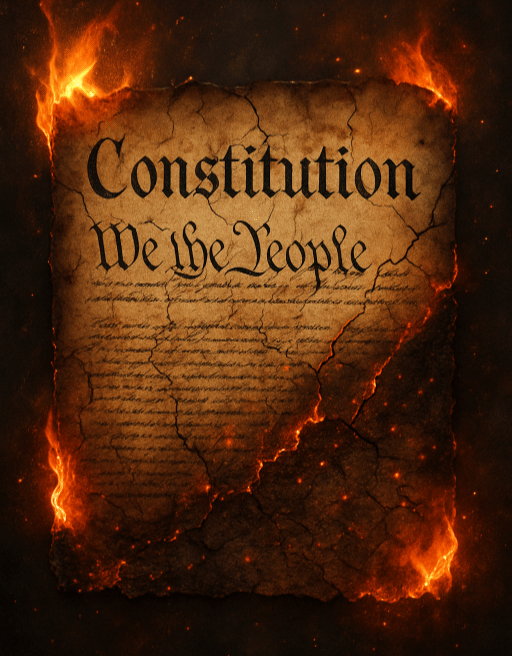Civil War v. Civil War 2.0: A World of Difference
Changes in population distribution, economics, and the structure and nature of our political institutions make lethal Red v. Blue scenario-dependent conflicts possible. Can the Republic survive?

Publisher Note: Because events are moving even faster than I anticipated, I’m releasing this piece early.
In this second installment on the prospects of a "Civil War 2.0," I'll examine some key and sweeping changes in America over the last 160 years and how those changes would shape the likelihood and outcome of a violent domestic showdown between Donald Trump and his supporters versus his opponents.
Yankees v Rebels
In the decades after the Revolution and the ratification of the Constitution, the North and the South evolved into largely distinct geographical and cultural entities. By the late 1850s, the South's reliance on Black slave labor had become the political and moral wedge dividing Americans in the two regions. The commitment of the new Republican Party and its 1860 presidential nominee, Abraham Lincoln, to stop the expansion of slavery into new territories and states was viewed by the white Southern political class as a direct threat to its political and economic survival.
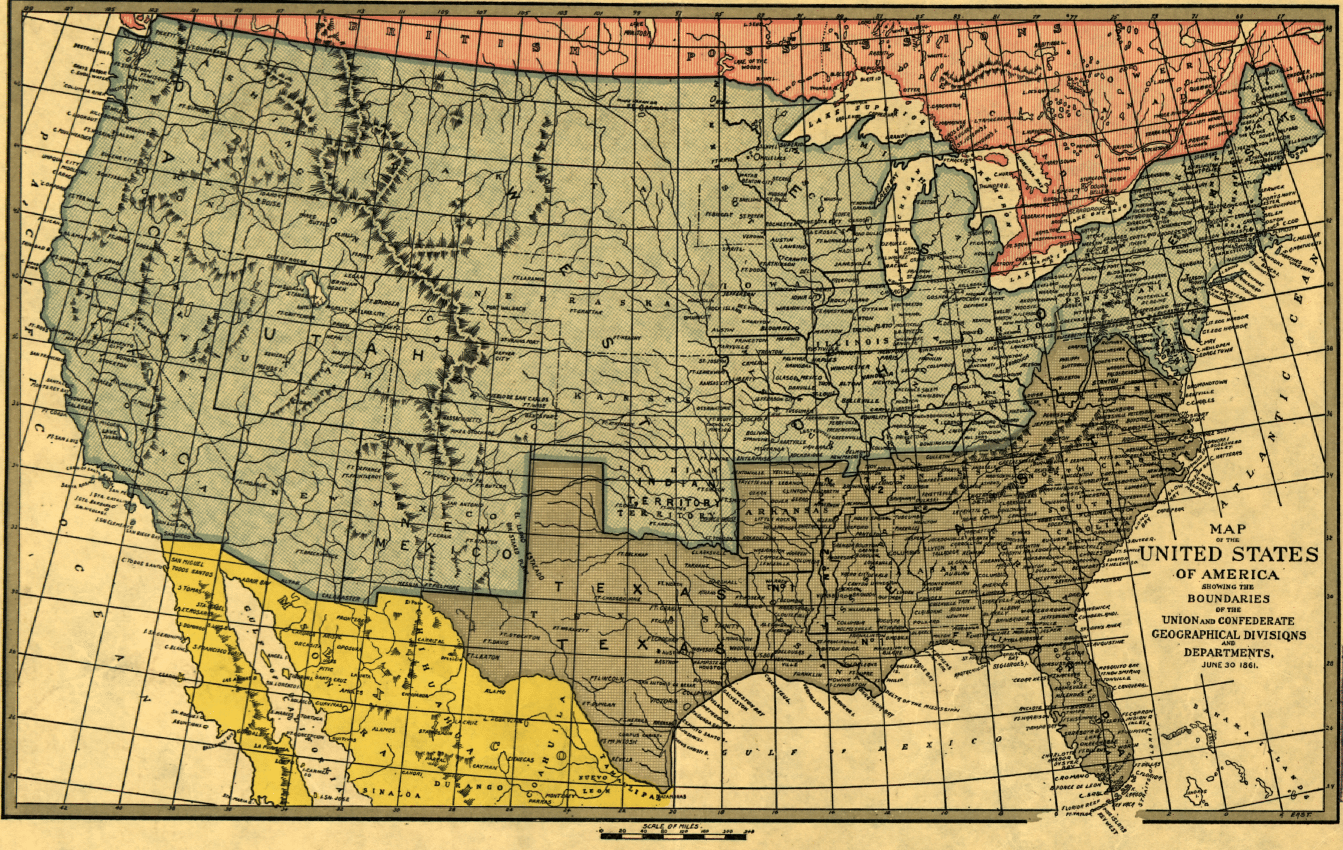
What began with the Confederate attack on Ft. Sumter, South Carolina in April 1861 led to what remains the bloodiest war in American history, one that was largely fought along fairly predictable geographic lines. Many historians would argue--and I agree--that the Union ultimately prevailed militarily because of its 1) larger manpower for field armies, 2) its vast industrial superiority over the South, and 3) virtually complete Union control of the sea lanes, thus denying the Confederacy export avenues for its cotton and the ability to import raw or finished war materiel.
The America of 2024 is vastly differently configured than the America of 1861, and because of that, the nature, scope, and duration of any violent confrontation between pro-and anti-Trump forces will also likely be very different.
Political Demographics
In contrast to the fairly clean geographical and population divide of 1861, pro- and anti-Trump Americans in 2020 were dispersed in varying concentrations in each state, as the map below demonstrates via voting outcomes at the county level:
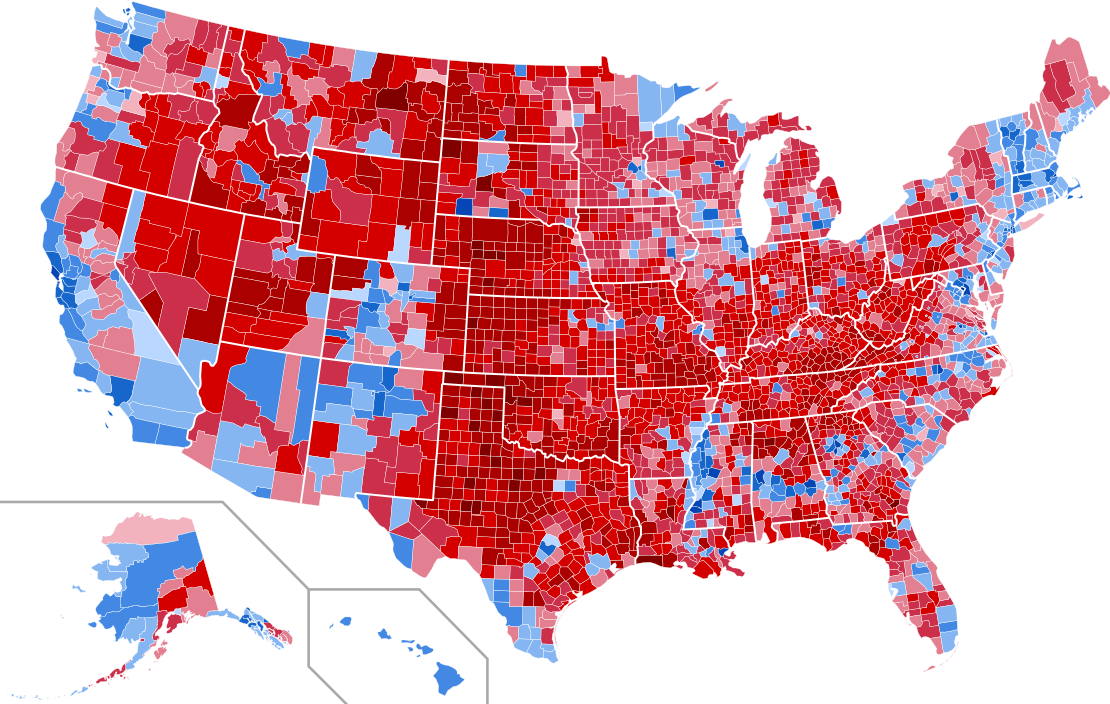
For purposes of this analysis, my assumption is that these distributions from 2020 will remain roughly similar for 2024 and the immediate period beyond.
The partisan voter distribution from the 2020 electoral contest doesn't exactly mirror the "coastal elites" framing we often hear from some politicians and right-wing media outlets, but it's fairly clear that anti-Trump elements tend to be more concentrated in urban or suburban areas vice exurban or rural ones.
Even so, changed political and demographic trends in a number of southern and western states over the last 20 years or so have created more areas that are politically mixed or even trending slightly leftward. This has been especially pronounced in Virginia, North Carolina, Georgia, and to a degree, Arizona. Some data suggest that even when people move from a largely politically liberal state to a more conservative one--from California to Texas, for example--the new arrivals tend to seek out places to live in which like-minded people can be found.
Contrary to the pre-Civil War era, our growing political polarization is taking place within states vice between clearly distinct geographic regions. Those are conditions that lend themselves towards a more sectarian kind of civil conflict along the lines of what Lebanon has experienced since the mid-1970s.
Key Commodity Production and Infrastructure Locations
Whether the conflict scenario involves organized combat between pro- and anti-Trump military forces or guerilla style operations between armed ideological militias, logistics would play a huge role in the ability of each side to field and maintain its forces. Access to reliable supplies of weapons, ammunition, spare parts, food, fuel, and medical services and supplies would be essential. The sources of many of these commodities are concentrated in states Donald Trump won in 2016 and 2020.
When it comes to food, meat and dairy production centers are heavily concentrated in politically "Red" states:
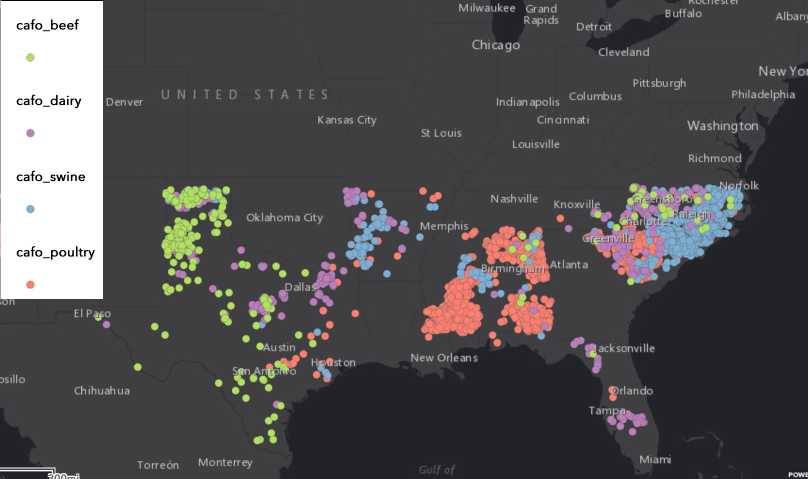
Does that mean that states with pro-Trump governors could or would attempt to cut off meat and poultry deliveries to anti-Trump areas in the event of a politically sectarian conflict?
As the producers in question are privately held businesses, such a governmental taking or intervention would likely be politically suicidal and legally unsustainable in the conservative "Red" states where such food production takes place. The agribusiness lobby is very politically powerful and employs thousands of people nationwide. Moreover, meat, dairy, swine, and poultry all go to grocery retailers patronized by people across the political spectrum; there are no pro-Trump or anti-Trump food retailers as such. The very interconnectedness of our food system would seem to make such a scenario a practical and political impossibility.
The same can likely be said of fuel refining capacity (per the map below):
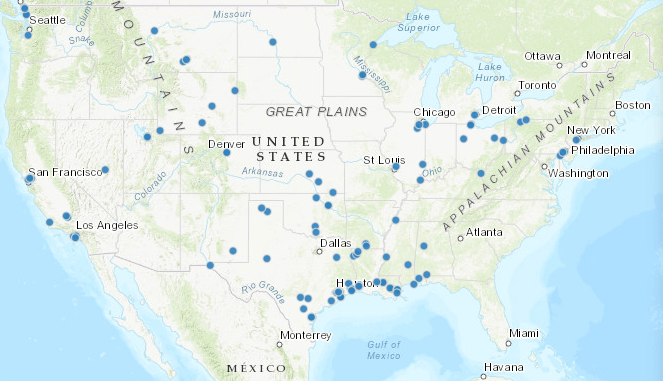
While it's possible that there are exclusively pro-Trump or anti-Trump gas stations out there, I've yet to encounter one. This is another commodity that producers need to sell and that consumers and businesses need to have. Again, the interconnectedness and interdependence of producers and consumers likely makes sectarian fuel boycotts or "throttling" of political opponents' gasoline or fuel oil supplies yet another practical impossibility.
As far as the electrical power grid is concerned, there have been some actual physical attacks on electrical substations in the Pacific Northwest and plots by white supremacists to attack the nation's power grid, but authorities and the relevant utilities have generally been successful in arresting perpetrators or plotters. Admittedly, that will not always be the case. Even so, random attacks on electrical substations that result in widespread outages would affect pro- and anti-Trump residents, making attacks on them counterproductive for sectarian combatants. A more likely scenario are cyberattacks by hostile foreign actors against the grid combined with propaganda and/or disinformation campaigns designed to stoke political sectarian animosities and increase social division within communities and the country as a whole.
With respect to drinking water, 85% comes from municipal water suppliers (per USGS) and water treatment chemical manufacturers are located in multiple places across the country, so that's another part of the logistics chain that seems largely immune to disruption from mass, organized sectarian violence.
None of this is meant to suggest that attempts to weaponize commodity disruption or denial against opposition political populations are impossible or will not occur. But the political, economic, and practical obstacles to doing so, particularly at scale and in a targeted way, are extremely formidable.
The Law Enforcement/Military/Paramilitary Dimension: The Threat Of Political Extremism In The Ranks
Civil Service Vulnerabilities
As the House January 6 Select Committee investigation into Trump's attempted coup showed, it was the willingness of senior Department of Justice (DoJ) leadership to resign as a group over Trump's false election fraud claims that caused him to call off his plan to install then Assistant Attorney General Jeffrey Clark as outgoing AG Bill Barr's replacement. Unfortunately, should he win the 2024 election, we can be confident that Trump and his new team of sycophants will take steps to ensure that there will be no resistance to Trump's "revenge tour" plans from DoJ employees.
As I noted just over a year ago in The UnPopulist
"....the Office of Personnel Management, an agency within the federal government that manages the civil work force, currently stipulates: “Each agency has the right to decide what positions are abolished, whether a RIF (Reduction in Force) is necessary, and when the RIF will take place.”
Even a non-Senate confirmed, acting Attorney General could literally, with the stroke of a pen, shave off the entire top civil service management structure at DoJ, including the Federal Bureau of Investigation (FBI), the Bureau of Alcohol, Tobacco, Firearms, and Explosives (BATFE), and the Drug Enforcement Administration (DEA) and replace senior department and agency managers with Trump loyalists, ready to carry out his orders to harass or arrest his political opponents. The same applies to the 93 U.S. Attorneys offices and the U.S. Marshals Service.
Would a GS-14 federal law enforcement agent who is the sole breadwinner in a family of four quit their job if ordered to spy on a Trump opponent? Conduct a new version of COINTELPRO activities against them? Or would the pressure of having money to pay the bills and take care of the family cause them to go along with such new outrages?
The specter of even temporary Trump loyalist U.S. Attorneys bringing thousands of bogus charges based on thousands of such politically motivated FBI investigations is beyond chilling--and a live possibility if Trump regains the presidency given his "revenge tour" threats. And if Trump directs his newly installed minions at DoJ to simply summarily arrest and detain protesters, political opponents, etc. without bothering with due process via the courts, what power do federal judges or the Supreme Court have to stop him? None. They rely on their protection from the U.S. Marshal Service Trump will control. Checkmate.
The Uniformed Services
For most of the second half of the 20th century and up to the present day, racism and violent acts tied to white supremacists within the ranks of the military have been a recurrent problem directly impacting morale and unit readiness. A recent report by the Institute for Defense Analyses (IDA) commissioned by the Pentagon looks at the history of extremist behavior in the military spanning the Vietnam Era (starting in 1967) up through the present. Nearly all of the incidents catalogued by IDA involved racially motivated violence by White military members against primarily Black military personnel or civilians, though several high-profile incidents of Salafist/pro-ISIS terrorism by military personnel are also discussed.
However, the most widespread impact on Army and Marine Corps ground force cohesion, unit readiness, and combat performance date from the Vietnam War era with incidents at scale involving desertions or draft evasion in opposition to the war, a problem not addressed in detail in the IDA study. While there is no question that ongoing, improperly addressed racist attitudes and actions within the U.S. military represent a significant threat to unit morale and cohesion, the American military has never faced the kind of political threat posed to its integrity that Donald Trump represents.
In the initial article on the Sentinel, I had this to say about Trump's relationship with then Secretary of Defense Mark Esper:
Throughout the summer and into the fall of 2020, Esper continued to oppose the deployment of regular Army troops in response to the ongoing BLM protests. As a result, his relationship with Trump deteriorated. But it was not until November 9--six days after Trump's election loss--that he was unceremoniously told by then-White House Chief of Staff Mark Meadows that he was being fired because he "was insufficiently loyal or not loyal to the President." Esper told Meadows that "...my oath was to the Constitution and not to the President." (Esper transcript, p. 40).
Looking back, the significance of Esper's ouster becomes clear. A seasoned national security professional, he successfully thwarted Trump's desire to employ regular Army troop against BLM protesters, and his loyalty was clearly to the Constitution vice Trump. Esper was the kind of person Trump could ill afford to have in a position of power given his intention to overturn the results of the 2020 election.
If he wins the 2024 election, Trump will not repeat the mistake of selecting people loyal to the Republic for such key positions. Even if such appointees are not officially Senate confirmed and serving in temporary, acting capacities, Trump will likely pick individuals to lead DoJ, DoD, and DHS who are totally loyal to him and willing to summarily arrest or fire upon anti-Trump protesters or political opponents at his command.
As I also noted in my initial piece in this series, while a relatively small handful of current or former military members participated in the January 6, 2021, attempted coup, no U.S. military units--whether Active Duty, Reserve, or National Guard (NG)--mutinied or suffered desertions in support of Trump's actions. There is at present no publicly available, peer reviewed data suggesting the unit cohesion, morale, and general loyalty to the Republic among any military unit has eroded to the point where a Trump call for revolution in the wake of his disqualification under the 14th Amendment or a second electoral defeat would produce mutinies or desertions, much less at scale.
However, as the IDA study notes
Although interviews and site visits appeared to show that extremist activities in the military are infrequent, these discussions were largely focused on active duty service members and currently employed DOD civilians. Several senior leaders cautioned that national guard and reserve members may be both more vulnerable to extremist radicalization and more difficult to monitor. Because members of these components spend more time away from their units, they may require more time to become fully acculturated to DOD values. Additionally, norms for acceptable behavior vary by region, which could make it difficult to implement uniform standards of behavior across the country. Many of these factors also apply to veterans, who live and work in communities around the country and are likely to reflect local values. (p. 20, emphasis added)
That senior DoD leaders are concerned about potential Reserve and NG unit vulnerability to conventional forms of white supremacist propaganda and incitement is telling, but it is far from the most dangerous and consequential threat to the political loyalty of the American military to the Constitution, and thus the Republic.
The individual current and former military and law enforcement members who participated in the January 6, 2021, attempted coup were united by a belief--fed by a continuous stream of lies and disinformation by Trump and his confederates--that their chosen presidential candidate had been robbed of an election victory. Their concern and their loyalty centered on one man--Donald Trump--not the Constitution or the Republic. The IDA report completely elides this issue, perhaps because addressing it would draw the ire of Trump supporters in Congress and spark efforts to cancel existing IDA contracts.
Yet Trump's prior and potential future ability to motivate his supporters with current or prior military or law enforcement service to either join a future uprising (if he's disqualified or loses the 2024 election) or become enforcers for his new Administration (if he wins) remains the single most important issue before us. Put another way, are enough current or prior military or law enforcement veterans willing, at Trump's urging, to take up arms against the federal government and their fellow citizens if Trump is disqualified or electorally defeated to give him a chance of achieving power by force?
That is the kind of core question IDA should've been tasked to address. Absent that assessment, at present we have no way of knowing. And the actions of Texas Republican Governor Greg Abbot to defy federal authorities and call up the Texas National Guard to police the border have not only been endorsed by Trump, he’s called for other governors to send their Guard forces to Texas to help out.
This isn't about immigration. This is about Trump testing the extent to which GOP governors take his lead on unleashing coercive power at his request/direction while NOT in office. This is the test run for a call to revolt if he's disqualified or convicted.
What we do know is that major political or legal triggers are looming that could give us early, and potentially very unsettling, indications of the magnitude of the threat. Among them are federal court rulings that Trump 1) is not immune from prosecution or especially 2) that he is disqualified as a candidate because of his insurrectionist actions leading up to and on January 6, 2021.
There is relatively recent polling (see here and here) that suggests one or more convictions of Trump in his pending federal trials could cost him enough support to lose the general election to Biden. Of those trials, the January 6, 2021, insurrection-related trial (currently scheduled to begin March 4 but likely to slip due to ongoing Trump appeals on the presidential immunity issue) is the one likely to be completed well before the general election, and possibly before the GOP and Democratic presidential conventions this summer.
Next week, I'll take a look at the first scenario that could trigger major sectarian domestic violence: Trump federal legal and political defeats during the balance of Biden's current term. The following week, I'll lay out the potential for the corollary: a Trump victory that leads to federal coercive powers being unleashed on his political opponents.
Thanks for reading The Republic Sentinel. If you're not currently a subscriber, please consider signing up for this free publication.



